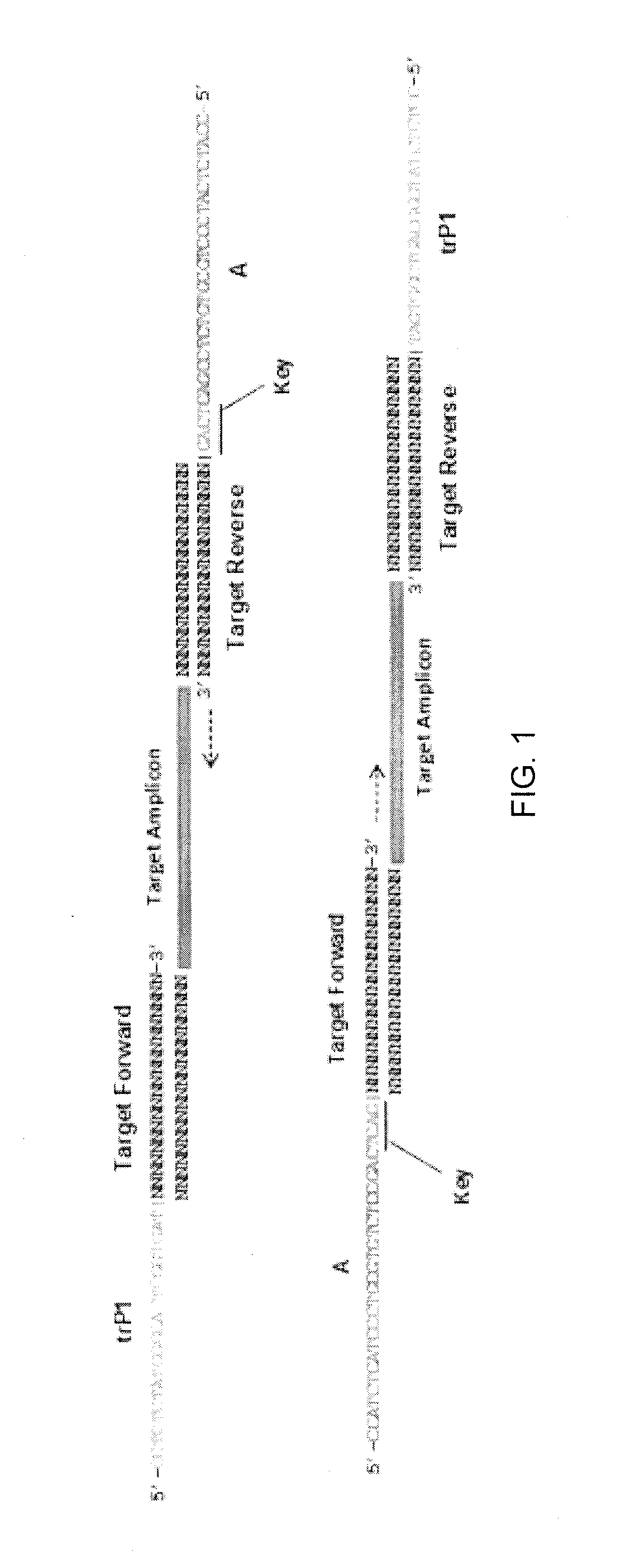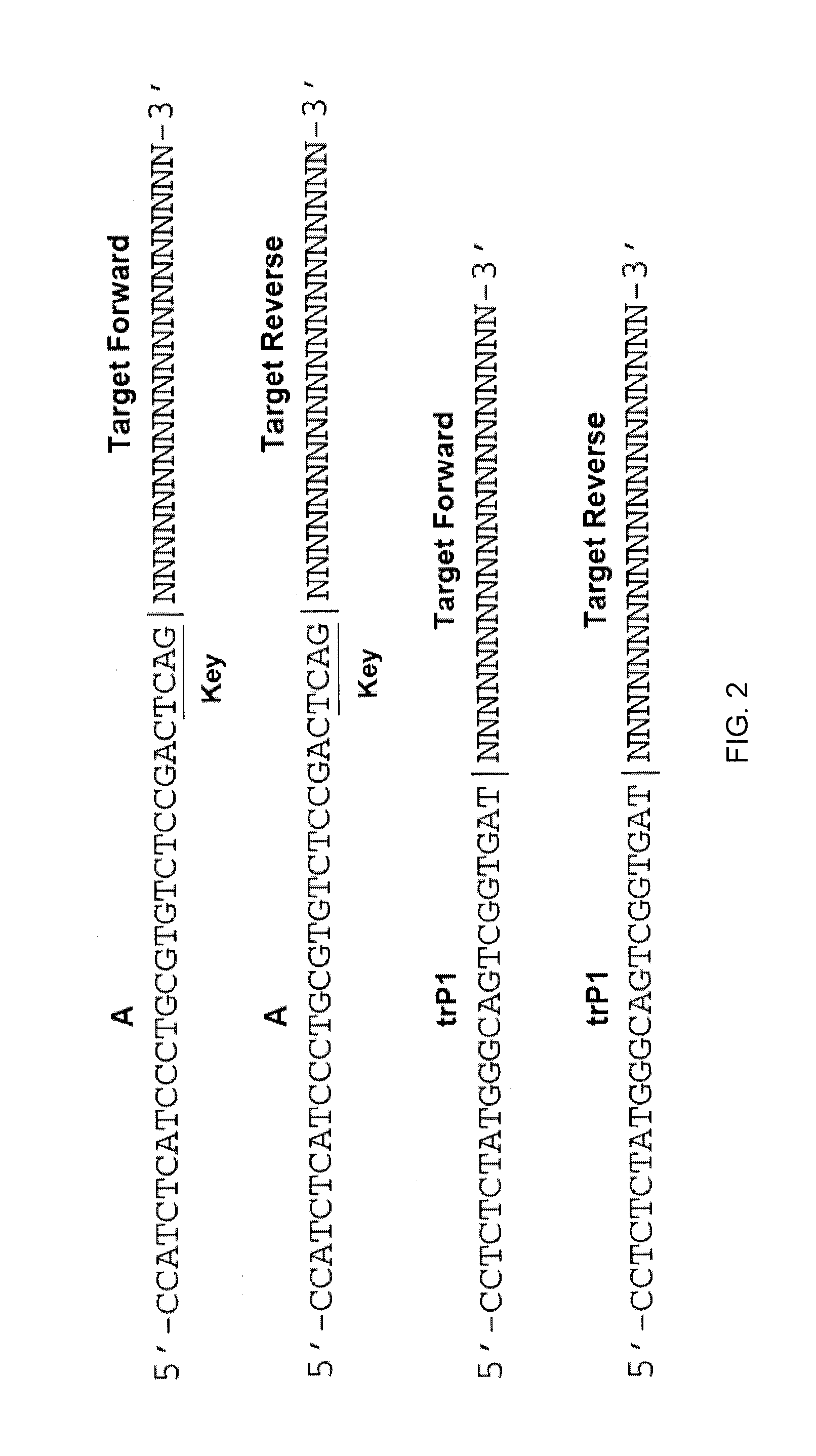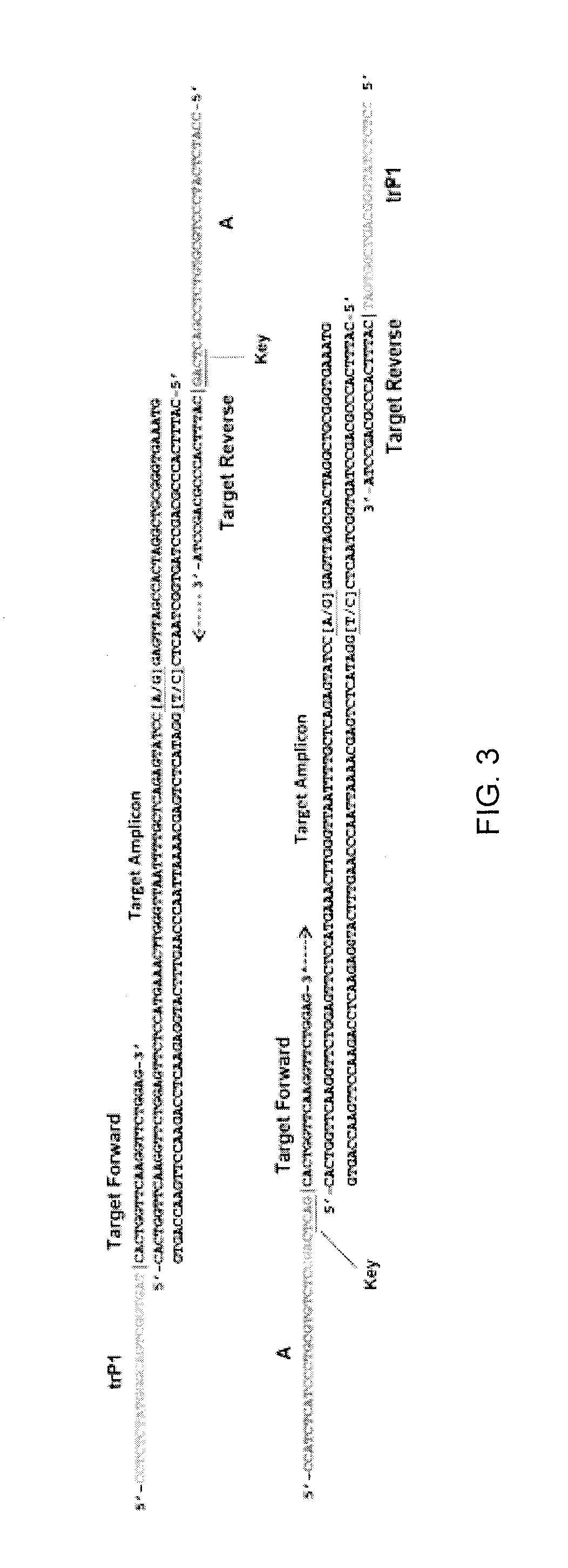Method and kit for characterizing microorganisms
a microorganism and kit technology, applied in the field of methods and kits for characterizing microorganisms, can solve the problems of inability to identify which species or even genus, inability to detect many strains of currently unculturable organisms, and inability to identify non-culturable organisms in specific ways, so as to reduce the amount of time associated, the effect of rapid identification and short tim
- Summary
- Abstract
- Description
- Claims
- Application Information
AI Technical Summary
Benefits of technology
Problems solved by technology
Method used
Image
Examples
example 1
General DNA Extraction Procedures
[0468]Tissues, fluids, other biopsy material, environmental, or industrial material that is suspected of containing bacterial cells can be extracted using one of three main methods:
[0469]Bone or Tough Tissue Preparation[0470]1) ˜200 mg of bone or tissue is placed in a sterile 50 mL conical tube and 5 mL of molecular grade water is added to the sample.[0471]2) The tissue is sonicated in 5-10 second bursts for a minimum of 5 minutes using a sterile sonicator probe at 10-14 watts.[0472]3) 200 μL of supernatant and any remaining bone / tissue fragments are transferred to a sterile 2 mL screw cap tube and 50-100 μL of 1 mm uneven stainless steel beads, 200 μL of Qiagen Buffer AL, and 204 of Proteinase K is added to the sample.[0473]4) The tube is then processed using a percussion based bead homogenizer for 5 minutes at medium speed.[0474]5) 600 μL of the resulting supernatant is run through an inert filter column to remove beads.[0475]6) 200 μL of 100% Etha...
example 2
DNA Purification from Tissues with the QIAamp® DNA Mini Kit
[0495]DNA can be purified from tissues using the QIAamp® DNA Mini Kit (QIAGEN, Germantown, Md.).
[0496]Important points before starting:[0497]All centrifugation steps can be carried out at room temperature (˜15-25° C.).[0498]Use carrier DNA if the sample contains [0499]Avoid repeated freezing and thawing of stored samples, since this leads to reduced DNA size.
[0500]Transcriptionally active tissues, such as liver and kidney, contain high levels of RNA which will copurify with genomic DNA. RNA may inhibit some downstream enzymatic reactions, but will not inhibit PCR. If RNA-free genomic DNA is required, include an RNase A digest.
[0501]Things to do before starting:[0502]Equilibrate the sample to room temperature (˜15-25° C.).[0503]Heat 2 water baths or heating blocks: one to 56° C. for use in step 3, and one to 70° C. for use in step 5.[0504]Equilibrate Buffer AE or distilled water to room temperature for elution in step 11.[050...
example 3
DNA Purification from Blood with the QIAamp® DNA Mini Kit
[0524]DNA can be purified from blood using the QIAamp® DNA Mini Kit (QIAGEN, Germantown, Md.).
[0525]This protocol can be for purification of total (genomic, mitochondrial, and viral) DNA from whole blood, plasma, serum, buffy coat, lymphocytes, and body fluids using a microcentrifuge.
[0526]Important points before starting:[0527]All centrifugation steps are carried out at room temperature (˜15-25° C.).[0528]Use carrier DNA if the sample contains [0529]200 μl of whole blood yields 3-12 μg of DNA. Preparation of buffy coat is recommended if a higher yield is desired.
[0530]Things to do before starting:[0531]Equilibrate samples to room temperature.[0532]Heat a water bath or heating block to 56° C. for use in step 4.[0533]Equilibrate Buffer AE or distilled water to room temperature for elution in step 11.[0534]Ensure that Buffer AW1, Buffer AW2, and QIAGEN Protease have been prepared.[0535]If a precipitate has formed in Buffer AL, d...
PUM
| Property | Measurement | Unit |
|---|---|---|
| time | aaaaa | aaaaa |
| temperature | aaaaa | aaaaa |
| volume | aaaaa | aaaaa |
Abstract
Description
Claims
Application Information
 Login to View More
Login to View More - R&D
- Intellectual Property
- Life Sciences
- Materials
- Tech Scout
- Unparalleled Data Quality
- Higher Quality Content
- 60% Fewer Hallucinations
Browse by: Latest US Patents, China's latest patents, Technical Efficacy Thesaurus, Application Domain, Technology Topic, Popular Technical Reports.
© 2025 PatSnap. All rights reserved.Legal|Privacy policy|Modern Slavery Act Transparency Statement|Sitemap|About US| Contact US: help@patsnap.com



